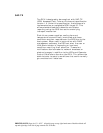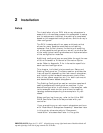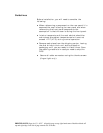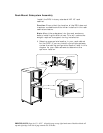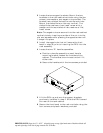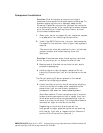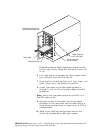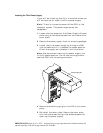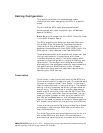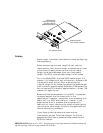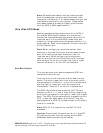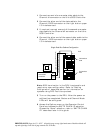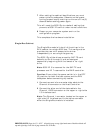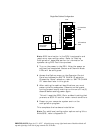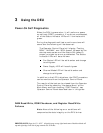
PRINTER NOTE: Page size 9” x 9.25”. Align this page to top, right hand corner. Back box bleeds off
top and right edge. Left side of page extends to 9.25 inches.
Cabling Configuration
This section provides the recommended cable
configurations when operating the DEU in a specific
mode.
The Ultra Wide SCSI mode provides enhanced
performances with data transfers up to 40 MBs per
second (20 MHz).
Note: Be sure to enable the Ultra SCSI (Fast-20) mode
in the SCSI Adapter Setup.
The DEU supports the American National Standard
Ultra SCSI (Fast-20) parallel interface standards,
referred to as Ultra Wide SCSI. This standard is
backward compatible with Fast SCSI (SCSI-2 with the
Wide option), also referred to as Fast Wide SCSI.
These standards define the mechanical, electrical, and
timing requirements. In compliance with these
interface standards, certain limitations apply when
considering the configuration, lengths of cabling, and
termination. The configuration samples and cables
provided with the subsystem meet the requirements of
the specifications. Modifications to any of these
variables can have less than desirable results when
operating any SCSI device.
Termination
Termination is required at both ends of the SCSI bus.
There are two sets of jumpers on the I/O Interface card.
One set of jumpers routes “Term Power” in the event
that the host controller is not providing it. The default
setting is the unjumpered condition (jumper offset on
one pin only). The second set of jumpers addresses a
specific set of controllers that use the DEC Fault Bus
protocol. If your controller uses this protocol, you will
need to jumper (jumper on both pins) at location JP3
and JP4 on the backplane for the indicated channel
that will be used. A jumper at either of these locations
will disable termination at that point on the SCSI bus.
If you are using a controller that provides Term Power,
no change is required and SCSI bus termination will
occur automatically.
The Host Controller card provides termination for one
end of the SCSI bus, while the I/O Interface card
provides final termination at the other end of the bus.



